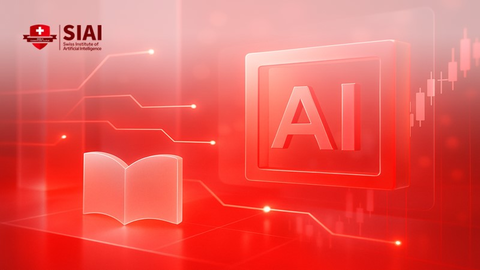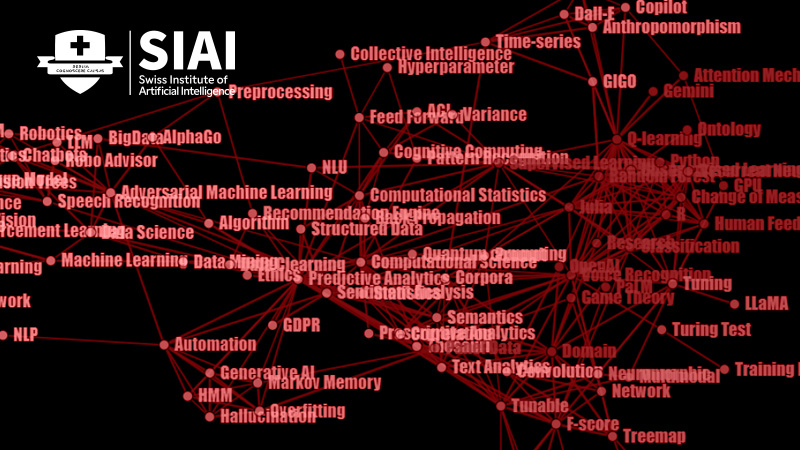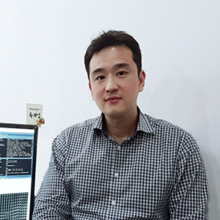AI Bootcamp vs. SIAI’s AI MBA: The Future of AI Careers
AI Bootcamp vs. SIAI’s AI MBA: The Future of AI Careers
Published
Modified
AI Bootcamps provide emotional satisfaction but no real AI knowledge. SIAI’s AI MBA (Business & Tech Tracks) offers real AI project exposure and strategic thinking. Basic software engineers will be obsolete by 2035, replaced by AI and offshore talent
After launching AI MBA's business track, we sometimes have questions about the value of the track. Most people, particularly, engineers think that's just a waste of time. Some of them even claim that AI Bootcamp is the better option, as it costs less money.
Do I and do all GIAI members agree? Far from it.
From our perspective, AI Bootcamp really has no value. It is designed in a way to make easy money from AI hype. Can they modify AI libraries for company's specific needs, just as an example? Sometimes we also have to sit down together to read mathematical logic from the libraries. We seriously doubt that any of bootcampers are capable.
On the contrary, in AI MBA's business track, you get to see what PreMSc and AI MBA's technical track students do. You can really see what true AI/Data Science is. This will not help you to become an AI engineer, unfortunately, but it will at least help you to make decisions like:
- Stop hiring incompetent fake AI engineers (bootcamp level)
- Stop spending $$$ for superfluous GPUs
Let's face to the reality. You are not good at math. Then, you can never be true AI/Data Science expert. Going to AI Bootcamp gives you still nothing. Nothing at all. AI MBA's business track? You can at least open your eyes to tell what is right and what is wrong. That will help companies to save tons of money.
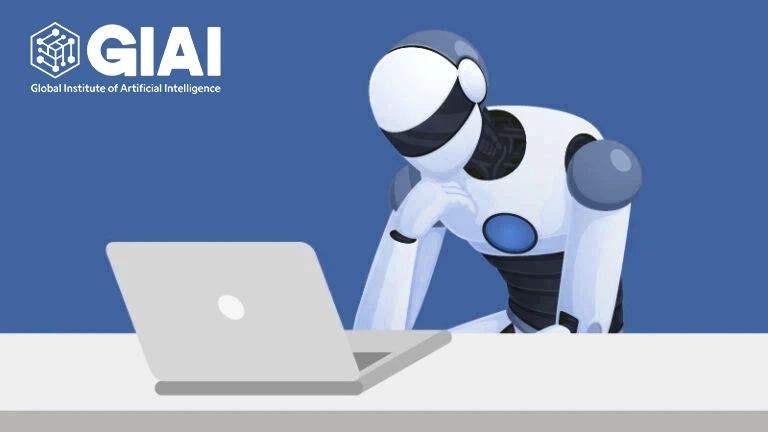
AI Bootcamp = Emotional Satisfaction, Not Real Knowledge
✔ Bootcamps teach surface-level AI, focusing on short-term gratification rather than deep learning.
✔ Most bootcamp grads can barely explain the math behind models, let alone build something from scratch.
✔ Bootcamps are designed for quick "I-feel-like-an-expert" dopamine hits, not actual expertise.
✔ Executives and engineers who take bootcamps walk away feeling like they "understand AI"—but they don’t.
Executives Who Attend AI Bootcamps
❌ Walk away with buzzwords, not knowledge.
❌ Think they can now "manage AI teams" but lack real understanding of AI costs, risks, and limitations.
❌ Bleed money hiring the wrong people (bootcamp grads) or investing in the wrong infrastructure (GPU waste).
Engineers Who Attend AI Bootcamps
❌ Believe running pre-built models = AI expertise.
❌ Have no math foundation, so they can’t debug models or understand statistical failures.
❌ Are helpless without TensorFlow/PyTorch tutorials—they don’t actually understand what’s happening under the hood.
➡ Conclusion: AI Bootcamps are a complete waste of time and money. They don’t teach anything that can actually be applied in real AI projects.
I am sorry to be bold but If you want a real career in AI, a structured, rigorous program like SIAI’s AI MBA is the only way forward.
SIAI’s AI MBA: Business Track vs. Bootcamp
If bootcamps don’t teach real AI, then what’s the better alternative?
For executives: SIAI’s AI MBA Business Track
For engineers: PreMSc Prep Courses (or switching tracks if they can’t handle it).
Why Executives Should Choose SIAI’s AI MBA Business Track Instead of a Bootcamp
✔ Instead of shallow AI knowledge, they get real AI project exposure.
✔ Learn how to hire the right AI engineers (and why bootcamp grads are useless).
✔ Understand where AI actually makes money instead of wasting money on GPU-heavy nonsense.
✔ Can even try technical track courses if they’re bold enough, ensuring they know what’s realistic and what’s hype.
💡 End Result?
Executives who actually understand AI decision-making—not just a list of buzzwords from a weekend bootcamp.
Why Engineers Should Avoid Bootcamps and Take the Prep Courses Instead
For engineers, bootcamps give them a false sense of competence—but when faced with real AI work, they collapse.
✔ If they’re weak in math, they should start with the PreMSc Prep Courses.
✔ If they can’t handle even that, they should switch to business track and accept reality.
✔ If they stay in business track, they will feel self-deprecation watching smarter students do real AI work.
💡 End Result?
Engineers who can handle real AI will survive.
The rest should accept their limitations and pivot into AI strategy roles.
Again, sorry to sound too brual, but those who fail the prep courses (AI MBA's first two courses) should pivot, instead of forcing themselves into a field they’re not suited for. Why? Because your job will soon be replaced by offshore (Indian, for example) devs and ChatGPT like AI services.
Are Basic Software Engineers Becoming Obsolete?
Your prediction is largely correct—but with some nuances.
✔ Basic coding (CRUD apps, simple web dev, basic scripting) is already being automated by AI.
✔ Most entry-level programming tasks are now achievable with ChatGPT, Copilot, and other AI tools.
✔ Large companies are offshoring low-to-mid-tier development to India and other countries with cheaper labor pools—Western developers are getting squeezed out.
✔ Only the highest-end engineers—those with deep system knowledge, performance optimization expertise, and mathematical rigor—will remain indispensable.
In other words, mediocre software engineers will struggle in the next decade. Then, who will surive? We believe only the following two types.
1. High-End, Specialized Engineers (Unreplaceable by AI)
These are the software engineers who will still be valuable in 10+ years:
✔ Systems Engineers – Experts in OS, networking, compilers, and embedded systems.
✔ Algorithm & Optimization Experts – Those who can implement custom AI models, efficient algorithms, and numerical methods.
✔ Mathematical & Scientific Programmers – People who develop scientific computing tools (e.g., Quant Finance, Computational Physics, Bioinformatics).
✔ Cybersecurity & Cryptography Experts – AI can’t fully replace defensive security strategies.
✔ Edge AI & Hardware Engineers – Those who optimize AI models for real-time, low-power, embedded systems.
🚀 Survival Strategy:
- Learn low-level engineering (C++, Rust, Embedded AI, OS internals).
- Master computational methods, not just software frameworks.
- Get into deep AI research, instead of just using AI models.
2. AI-Strategic Business Leaders (Who Use AI Instead of Competing With It)
For engineers who can’t reach the highest technical levels, there’s an alternative:
➡ Pivot to AI strategy, business, and decision-making.
✔ AI Product Managers – Experts who bridge the gap between AI research and product development.
✔ AI-Driven Entrepreneurs – People who build companies that leverage AI without being engineers themselves.
✔ AI Finance & Investment Experts – Those who evaluate which AI startups are real vs. hype-driven scams.
✔ AI Policy & Regulation Specialists – Governments need experts who understand AI risks, compliance, and governance.
🚀 Survival Strategy:
- Stop fighting AI head-on and start using it strategically.
- Understand where AI can be profitable, instead of just coding.
- Develop decision-making skills that AI can’t replace.
This is where SIAI’s AI MBA Business Track becomes the smartest move.
Why? The industry will look very different by 2035—and those who fail to adapt will be completely obsolete. So, for you to better understand what will happen, we have created a fictional story about Adam, Brian, and Charlie.
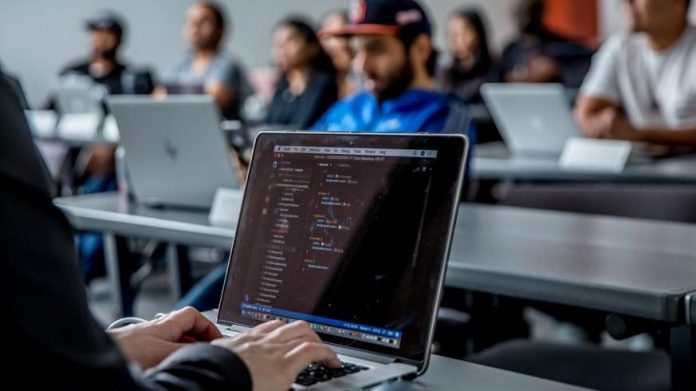
AI Bootcamp vs. AI MBA: The Story of Three Paths in the AI Era
In the early 2020s, AI was the hottest trend in tech. Every company wanted an AI strategy, every engineer wanted to become an AI expert, and every business executive wanted to invest in AI-powered solutions.
Among those caught in the wave were three college friends: Adam, Brian, and Charlie. They had studied together, worked on projects together, and often spent sleepless nights debugging code. But when AI took over the world, their paths diverged—leading to three very different outcomes by the year 2035.
This is their story.
Adam—The AI/Data Science Expert Who Leads the Future
Adam had always been the analytical one. During his undergraduate studies in Economics, he had fallen in love with econometrics and mathematical modeling. Unlike his peers, who viewed math as a painful requirement, Adam saw it as the key to understanding complex systems.
When AI started disrupting industries, Adam knew that surface-level AI wasn’t enough. He saw countless self-proclaimed AI engineers who could train models but had no understanding of why those models worked.
Determined to build real expertise, Adam joined SIAI’s PreMSc program, where he was pushed to his intellectual limits. The curriculum was brutal—probability theory, optimization, deep learning architectures—but he thrived. He moved on to SIAI’s MSc in AI/Data Science, completing two years of rigorous training.
By 2035, Adam was leading an AI division in a Fortune 500 company, tackling some of the most challenging AI problems in the industry. Companies fought over him, offering contracts worth millions. He wasn’t just an engineer running pre-built models—he was an AI scientist designing the future.
When asked about his success, he simply said:
AI isn’t about running models. It’s about understanding the world mathematically. If you don’t get that, AI will replace you instead of you building AI.
Brian—The AI-Savvy Business Leader Who Saved Millions
Unlike Adam, Brian had never been a fan of math. He had majored in Computer Science, but whenever advanced calculus or probability theory appeared, he instinctively looked for ways to avoid it.
In the mid-2020s, AI hype was at its peak. Bootcamps promised fast-track careers in AI with no math required. Excited by the opportunity, Brian enrolled in two AI bootcamps.
But reality hit hard.
The bootcamps taught pre-built AI libraries but failed to explain how or why models worked. Brian started to realize that he wasn’t actually learning AI—he was just copy-pasting code.
Frustrated, he joined SIAI’s PreMSc Prep program, hoping to finally break into real AI. But after months of struggling with advanced mathematics, he admitted to himself: AI wasn’t for him.
But instead of quitting entirely, Brian made a smart pivot. He switched to SIAI’s AI MBA Business Track, where he learned how AI really works in companies, how to hire real AI talent, and how to avoid costly AI mistakes.
By 2035, Brian was a senior AI executive, overseeing AI projects and hiring top AI engineers. Unlike other managers who blindly approved AI budgets, Brian knew exactly what mattered.
He cut unnecessary GPU spending, refused to hire overpriced but incompetent AI engineers, and saved his company millions.
When his company needed a new AI leader, Brian didn’t waste time—he reached out to his old classmate, Adam.
I spent years watching AI managers burn money on useless projects, They hired the wrong people, bought too much hardware, and failed to ask if AI was even needed. I built my career by not making those mistakes.
Charlie—The Self-Taught Kaggle Expert Who Became Obsolete
If Brian had doubts about AI bootcamps, Charlie fully believed in them.
When the AI hype started, Charlie rejected traditional education.
AI is an open field. You don’t need a degree, just learn from Kaggle.
He spent years grinding Kaggle competitions, improving his ranking day by day. He became a well-known name in the AI community, praised for his leaderboard achievements.
But Kaggle rewards gaming the system, not solving real problems. Charlie mastered brute-force hyperparameter tuning, but he never learned how to build AI solutions for real-world business needs.
For years, he coasted on his reputation—until his old friend Brian returned from his AI MBA.
Brian, now an AI executive, quickly realized that Charlie’s Kaggle expertise was useless in production AI. His entire workflow could be automated with ChatGPT.
When Brian’s company needed to optimize AI operations, he hired Adam instead of Charlie.
Within months, Adam built an internal AI system that replaced Charlie’s entire team. By integrating ChatGPT-style automation, Adam achieved in hours what Charlie and his colleagues used to do in weeks.
By 2035, Charlie found himself in a dying industry.
Afterwords in 2035—The cost of right and wrong choices
After launching an internal version of ChatGPT for the company, Adam got numerous job offers from Fortune 500 companies desperately looking for internalizing and customizing the advanced AI algorithm. His salary got tripled and he became the team leader of the AI division.
Now, in every year, Brian, as an HR executive for AI brains, goes to SIAI's annual job fairs to hire a smart recent graduate who can be as effective as Adam. He also offers full scholarship for PreMSc graduates' study in next year's MSc on the condition that they will join after the graduation. Hunting brains in this field becomes more and more competitive.
Charlie could find jobs for a few years, but companies soon replaced him by offshore software engineers from India and ChatGPT. Charlie is no longer an AI expert, but more importantly, he is no longer an engineer. His Uber driver job got also replaced by self-driving services.
The Final Lesson—AI Bootcamps and Self-Teaching Are No Longer Enough
By 2035, the world of AI had sorted itself out:
- The real experts (like Adam) were in high demand, leading cutting-edge AI innovations.
- The AI-savvy business leaders (like Brian) were running AI projects efficiently, saving their companies millions.
- The bootcamp-trained engineers and self-taught Kaggle competitors (like Charlie) were struggling to stay relevant.
AI Bootcamp Graduates:
❌ Learned only surface-level AI.
❌ Got outperformed by AI-powered automation.
❌ Became easily replaceable by cheaper offshore talent.
SIAI AI MBA Graduates (Business or Tech Track):
✔ Gained real-world AI knowledge and strategic thinking.
✔ Built careers in high-value AI roles that AI itself couldn’t replace.
✔ Had the option to switch tracks, ensuring they maximized their strengths.
Do you think the fictional story too fictional?

